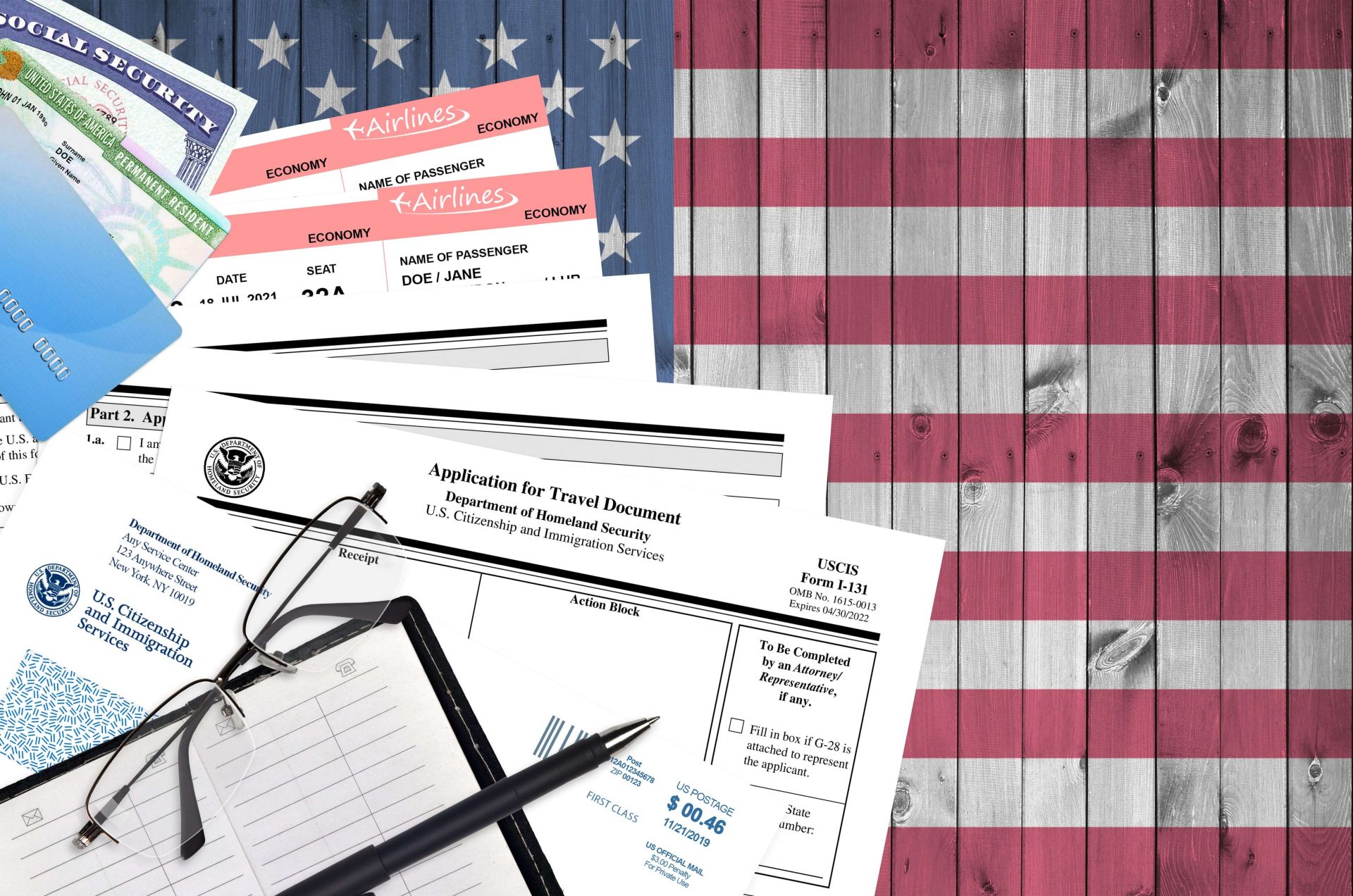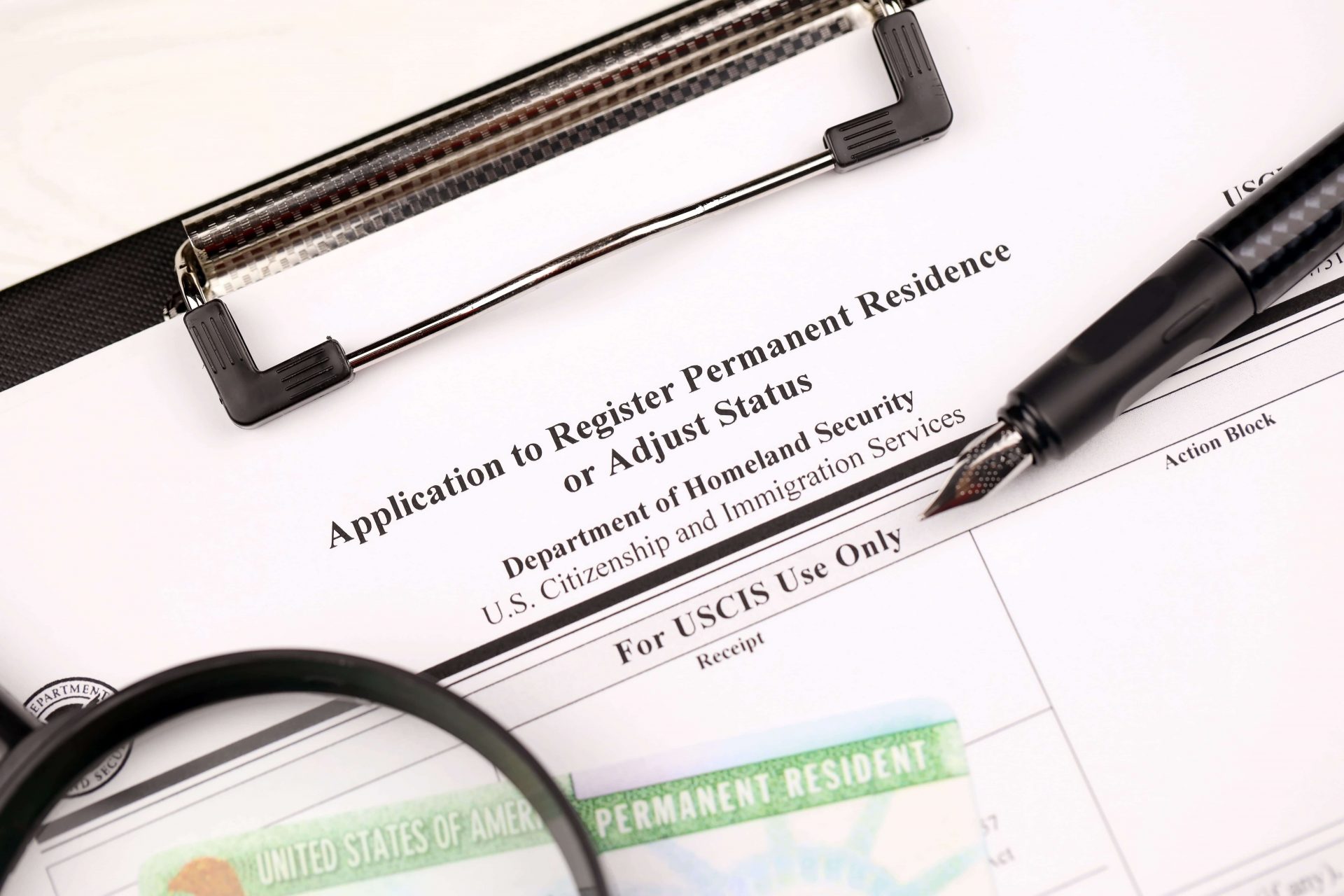

Whether you are a permanent resident planning lengthy travel or someone seeking advance parole with a pending immigration application, filing Form I-131 can be challenging.
We will explain who can file I-131, detail the process steps, and share how The Law Offices of Spar & Bernstein can simplify your filing and submission experience.
What Is Form I-131?
Form I-131, Application for Travel Documents, Parole Documents, and Arrival/Departure Records, is an immigration form used to apply for various travel-related documents from the U.S. Citizenship and Immigration Services (USCIS).
These travel-related documents can cover:
- Re-entry permit: Allows lawful permanent residents (Green Card holders) to re-enter the U.S. after traveling abroad for an extended period (typically over one year) without losing their residency.
- Refugee travel document: Grants people with refugee or asylum status in the U.S. the right to travel abroad and return safely.
- Advance parole: Enables individuals with pending adjustment of status applications to travel abroad temporarily and return to the U.S. without impacting their immigration status.
Who Can File Form I-131?
Those eligible to file Form I-131 can be categorized based on the type of travel document they require:
- Individuals with a pending Green Card application who plan to leave the U.S. temporarily and do not want to abandon their application
- Green Card holders who plan to leave the U.S. for more than a year but intend to maintain their residency
- Individuals with Temporary Protected Status (TPS) who wish to travel internationally under certain circumstances such as undergoing medical treatment, taking care of a sick family member or participating in educational programs
- Refugees and asylees who plan to travel and return to the U.S.
- Deferred Action for Childhood Arrivals (DACA) recipients who want to travel outside the U.S. for humanitarian, educational, or employment reasons
Leaving the U.S. without filing Form I-131 can risk your ability to return if you are a pending Green Card applicant, DACA recipient, TPS holder or asylee.
If you are a lawful permanent resident, you can leave the U.S. without it but might face issues if you spend extended time abroad and do not have a re-entry permit.

Form I-131: The Process
The process of filing I-131 involves several important steps.
1. Determine Eligibility
Ensure you are eligible for the type of travel document you are applying for, whether a re-entry permit, advance parole, or refugee travel document.
Some applicants are required to be physically present in the U.S. when filing Form I-131.
2. Gather Required Documents
Prepare:
- Two recent passport-style photographs
- A copy of your identity documents, such as a passport
- A copy of a government-issued ID with your photo
Based on the specifics of your application, you will need supporting documents:
- For re-entry permit: Proof of lawful permanent resident status — for example, a copy of your Green Card
- For refugee travel document: Proof of refugee or asylee status — for example, your I-94 or approval notice
- For advance parole: Documents showing eligibility for advance parole — for example, receipt of pending I-485, proof of DACA status, or evidence of humanitarian, employment, or educational reasons for travel
3. Complete Form I-131
Visit the USCIS website and download the latest version of Form I-131. Carefully read the instructions for completing it.
Fill in the document, providing your personal information, current immigration status, and travel document request details.
Specify the type of travel document you are requesting, along with any travel plans you have.
If you are filing for advance parole, give a detailed explanation of the purpose of your travel, whether for humanitarian, employment, educational, or other reasons.
4. Pay The Filing Fee
Check the current fee schedule and pay the fee. You can do that through:
- Check
- Money order
- Credit card (online), if filing electronically
5. Submit Your Application
File I-131:
- Online, after you create an account: This option is available for certain applications.
- By mail: Check the correct USCIS lockbox or service center based on your location and the type of application.
If you are applying for an adjustment of status, you can submit Form I-131 together with Form I-485, known as concurrent filing.
6. Wait For A Receipt Notice
After submitting the application, USCIS will send you a receipt notice, known as Form I-797. The purpose of this receipt is to acknowledge that they have received your I-131.
This notice contains your case number, which you can use to track the status of your case online.
7. Attend A Biometrics Appointment
In certain situations — for example, if you are filing for a re-entry permit or refugee travel document — USCIS may require you to attend a biometrics appointment to capture your fingerprints, photograph, and signature.
In this case, you will receive an appointment notice with the date, time, and location for your biometrics appointment.
8. Wait For USCIS Decision
If your application is approved, USCIS will mail you the travel document you have applied for. Be sure to carry it during your international travel and present it to U.S. Customs and Border Protection (CBP) when returning to the U.S.
If your application is denied, you will not receive the document, which can affect your ability to travel and re-enter the U.S. if you travel for an extended period of time. Consult with a knowledgeable immigration lawyer for guidance on reapplying or handling specific issues.

Form I-131: Cost
The cost of filing Form I-131 can vary based on the type of document requested.
Here are some examples:
- If you are filing for advance parole, the fee is $630.
- If you are filing for a refugee travel document and are under the age of 16, the fee is $135.
- If you are filing for a refugee travel document and are over the age of 16, the fee is $165.
- If you are filing for a re-entry permit, the fee is $630.
Some applicants may be eligible for a fee waiver, for example:
- Refugees needing a travel document
- Individuals seeking adjustment of status under the Violence Against Women Act (VAWA)
- Individuals seeking adjustment of status as U visa holders
In these cases, file Form I-912, Request for Fee Waiver.
Form I-131: Processing Time
The processing time for Form I-131 can vary depending on your case specifics and the type of document you requested. Other factors influencing the timeline include your location and the current USCIS workload.
- Re-entry permits or refugee travel documents typically take 15 months.
- Advance parole requests can take anywhere from 5 to 24 months.
Need Help With Form I-131? Schedule A Consultation
The Law Offices of Spar & Bernstein offer comprehensive legal guidance for a wide range of immigration processes, from asylum and refugee protection to DACA, citizenship and naturalization, and more.
We understand that navigating U.S. immigration laws can be overwhelming, that is why our experienced team takes care of completing all necessary forms, such as I-131, I-589, or N-400 and submitting them in a timely manner.
We work closely with you to:
- Address your unique circumstances in the best way
- Help you gather supporting documentation
- Assist with any obstacles that may arise during the process
- Represent you before immigration authorities if you are facing complex issues
Our goal is to help you achieve a positive outcome, just as we have done for every client through our many immigration success stories.
Form I-131: FAQs
Check out our frequently asked questions for more insights into the I-131 process and potential issues.
Can I leave the U.S. while my adjustment of status application is pending?
Leaving the U.S. without an approved document while your adjustment of status application is pending may be seen as abandoning your application, which could result in USCIS denying it.
Do I need to work with a lawyer to file Form I-131?
While working with a lawyer is not mandatory, they can help ensure your application is correctly completed and increase the chances of approval, especially in complex cases.
Can I expedite my Form I-131 processing?
Yes, in certain cases, you may request expedited processing if you can prove you meet certain qualifying criteria, such as urgent humanitarian reasons or potential financial loss. USCIS reviews expedited requests on a case-by-case basis, and whether your request is granted is entirely up to them.
Can I reapply if my Form I-131 is denied?
Yes, you can reapply for Form I-131 if it is denied. However, it is important to address the reasons for the denial in your new application. Working with our knowledgeable and compassionate attorneys at Spar & Bernstein may improve your chances of approval.
Do I need to attend an interview when filing Form I-131?
Typically, the Form I-131 process does not include an interview. However, certain applicants may be scheduled for a biometrics appointment or asked to provide additional information.
Can I change my travel plans after submitting Form I-131?
Yes, you can change your travel plans after filing I-131. Be sure to inform USCIS of the changes if they affect the dates or purpose stated in your original application. This will help you avoid potential complications.





